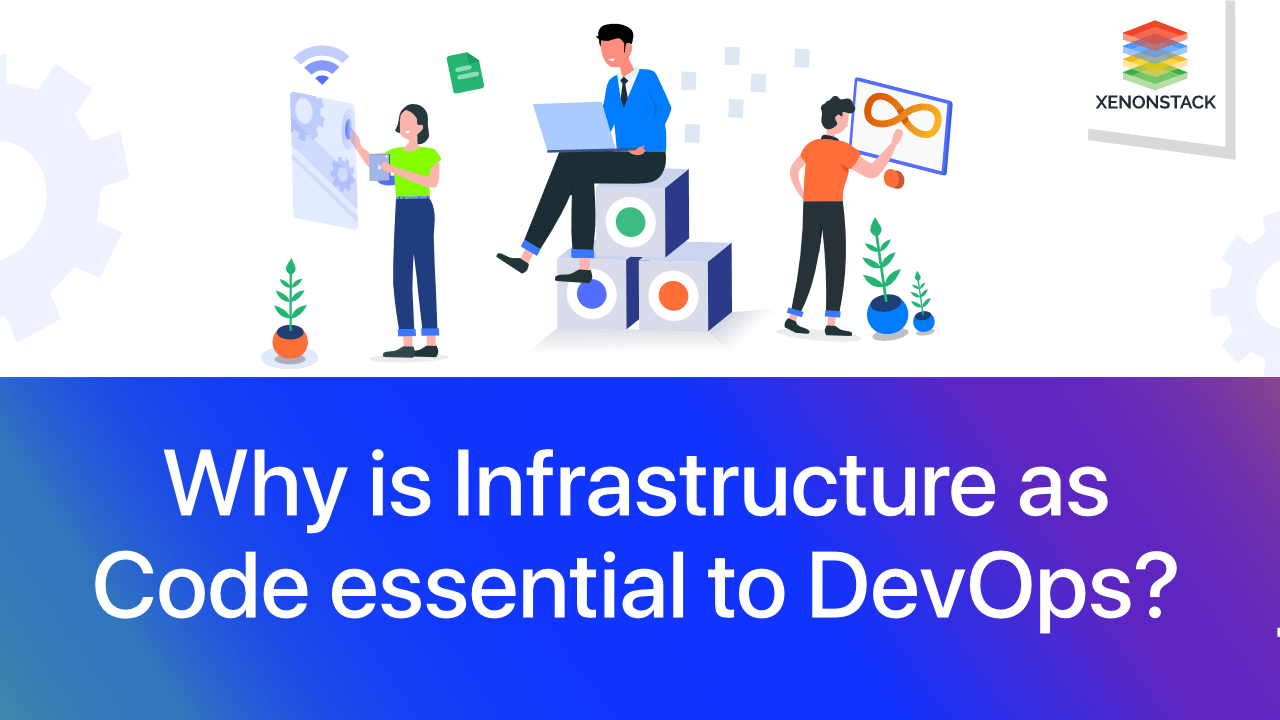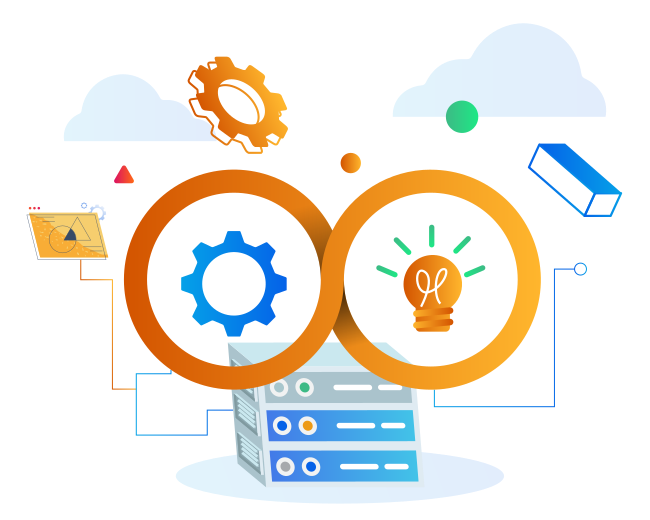
Introduction
Infrastructure as code means managing an operations environment the same way you do applications or other code. Some experts believe that IaC has been part of DevOps since the beginning, and some believe that DevOps doesn't exist without IaC.
What is Infrastructure as Code (IaC)?
Infrastructure as Code is based on the principle that administrators/system engineers should not log in to machines and configure them from scratch; instead, they should be writing codes that would eventually set them up to the desired state.
How Does Infrastructure as Code Work?
IaC can be divided into two categories. One follows the imperative approach, and the other follows the declarative approach.
The Imperative approach towards IaC comprises a sequence of commands executed in order, which eventually lead to a final result, i.e., infrastructure is set up.
The Declarative approach towards IaC follows the 'end-goal' mechanism. Here, we define the result required to implement Infrastructure as Code in DevOps, which is the infrastructure specifications. The tool will give us the expected final result—no need to write a sequence of steps anymore.
Is Infrastructure as Code Just Automation?
IaC is a concept that has more than just simple infrastructure automation. IaC involves applying DevOps best practices to automation scripts to ensure things are error-free, roll back in case of fault, and rebuild on multiple servers. Tools like Ansible or Puppet can be used for this purpose, which requires basic knowledge of coding techniques, and you're good to go.
What are the three basic DevOps principles?
Infrastructure as Code
As discussed above, Infrastructure as Code in DevOps describes all software requirements, network settings, and parameters in textual form. These texts act as manifest files that tools like Terraform or Ansible can use to configure production-level environments automatically.
Continuous Integration
All the developers work on the same project repository and finally integrate their code into it immediately after it has gone through several tests. This way, every new successfully tested code in DevOps Infrastructure as Code commit becomes a new product version and is ready for release in the market.
Tools like Gitlab CI, Jenkins, and Ansible can be used for version management, which shortens the delivery time by up to 80%. Even these days, organizations release updates almost 100 times a day with the power of continuous integration.
Continuous Delivery
Continuous delivery is the form of workflow where the previous stage's output in any software development life cycle becomes the input to the subsequent stage. When the developers commit a new change to the code, this action automatically leads to a new build instance, where a new code version begins to pass the unit and integration tests. Continuous development is based on continuous integration and Infrastructure as Code (IaC), leading to so-called "CI/CD pipelines."
Infrastructure as Code and CI/CD, not just for Software Development
To some, it might seem IaC and CI/CD contribute only to a software development life cycle, but there is more to that. Routine infrastructure management automation also minimizes DevOps engineers' workload, which is vital for more productivity. DevOps culture maximizes output at every stage by automating things.
What are the Best Practices for Infrastructure as Code?
With the basics of Infrastructure as Code in DevOps understood, now, let's look at some of the best practices one should follow while implementing IaC. Let's see what are Infrastructure as Code Best Practices:
Caution while extending Infrastructure as Code tools
As IaC makes deploying server infrastructure an effortless task for a DevOps engineer with the power to bring up hundreds of instances at once, this can also cause damage if not done with caution. Several cloud services, like AWS, Microsoft Azure, IBM, and more, charge based on instances/services being run hourly. So, infrastructure should be set up by only a professional DevOps engineer who understands how infrastructure works and is required according to the needs.
The stricter, the better
The stricter the rules followed to set up Infrastructure as Code in DevOps, the more minor the errors. Be very specific about the infrastructure requirement, i.e., storage requirement, network bandwidth, and number of instances required.
Also, it is crucial to include application developers in a loop while setting up infrastructure as they are the ones who know what precisely an application requires to be able to run smoothly.
Making code a single source of truth
DevOps Teams should specify infrastructure specifications in configuration files. These configuration files must act as a single source of truth for all infrastructure-related code.
Version control of infrastructure specification files
All the configuration files should be maintained under a version control system to make it easier to audit and track the changes.
Test and monitor your configurations
IaC is a code. All codes can be tested. By enabling testing and monitoring, errors and misconfigurations or inconsistencies in the servers can be checked before they are deployed in the production environment.
What are the benefits of Infrastructure as Code for Businesses?
1. Deployment speed
Environment provisioning becomes rapid with virtualized Infrastructure as Code in DevOps tools. This shortening of the environment process leads to faster delivery, thus making the life of a DevOps engineer easier.
2. High Scalability
The power of Terraform and Kubernetes manifests alongside virtualized cloud environments that provide additional instances to work in no time. IaC in DevOps leads to higher scalability.
3. Immutable Infrastructure
Every environment is provisioned using CI/CD pipelines, so there's hardly any room for human errors. This ensures environmental uniformity throughout the DevOps Infrastructure as a Code process.
4. Shorter Development Lifecycle
Setting up infrastructure for a developer becomes a quick and easy task rather, he will be able to develop new features more quickly, according to customer feedback. Now, the release of the new feature becomes a mere task of a few weeks instead of a year.

What's Next?
The IaC framework is an essential part of any DevOps environment, with the power to make development and infrastructure management an easy job for a developer. IaC blurs the line between application and environment, and in essence, DevOps also brings together the world of developers and operations.
The best way to implement IaC is to set up a dedicated team of experienced DevOps engineers who are focused on bringing a change to the whole development culture of the organization and understand how Infrastructure as Code can prove to be their best friend in need.
Also Read
- Know What Is DevOps And Its Processes? Ultimate Guide
- Learn about the Six principles of Infrastructure as Code.
.webp?width=1921&height=622&name=usecase-banner%20(1).webp)



